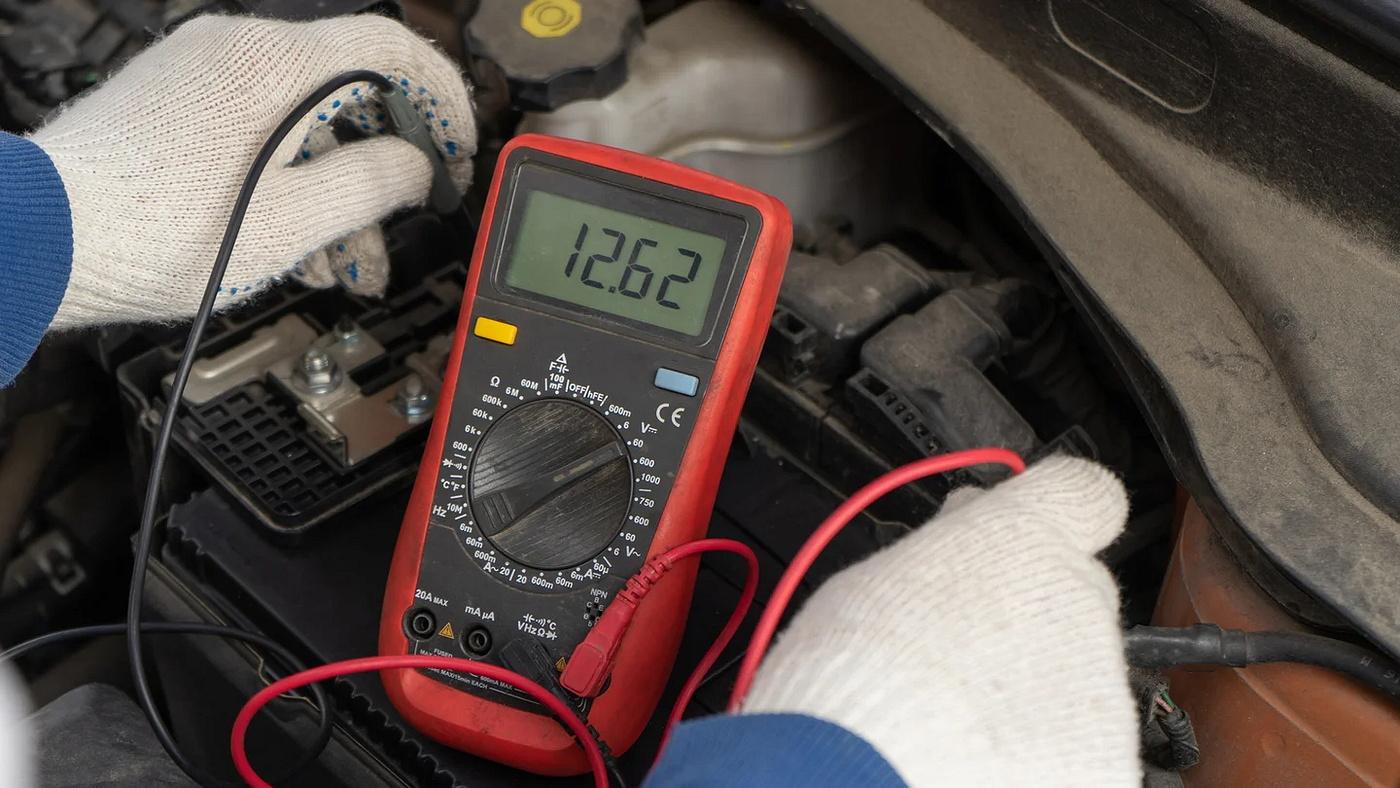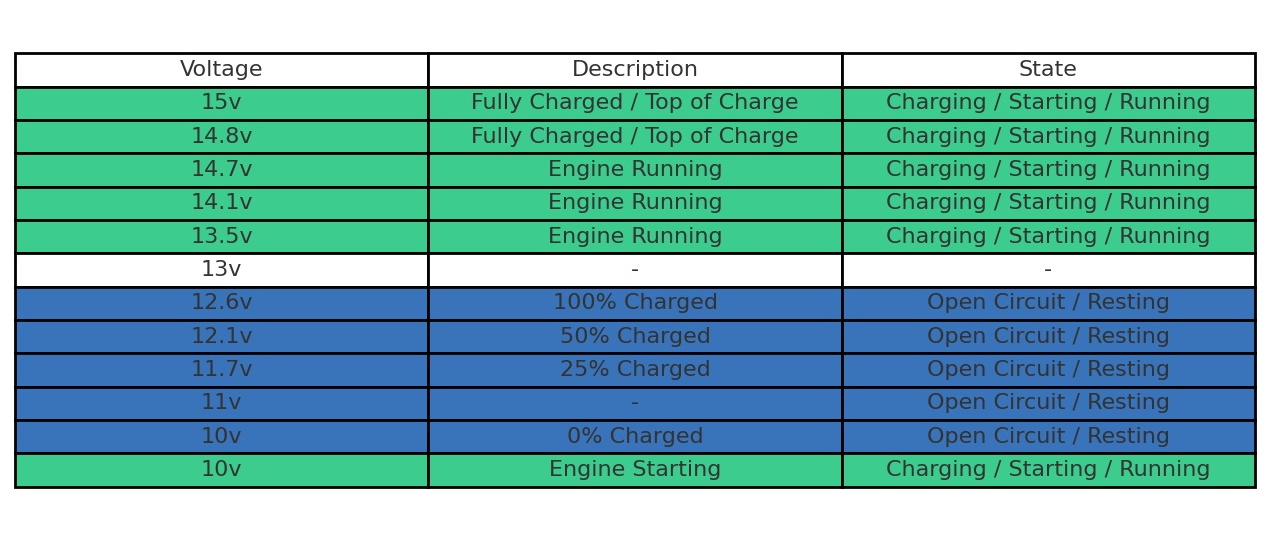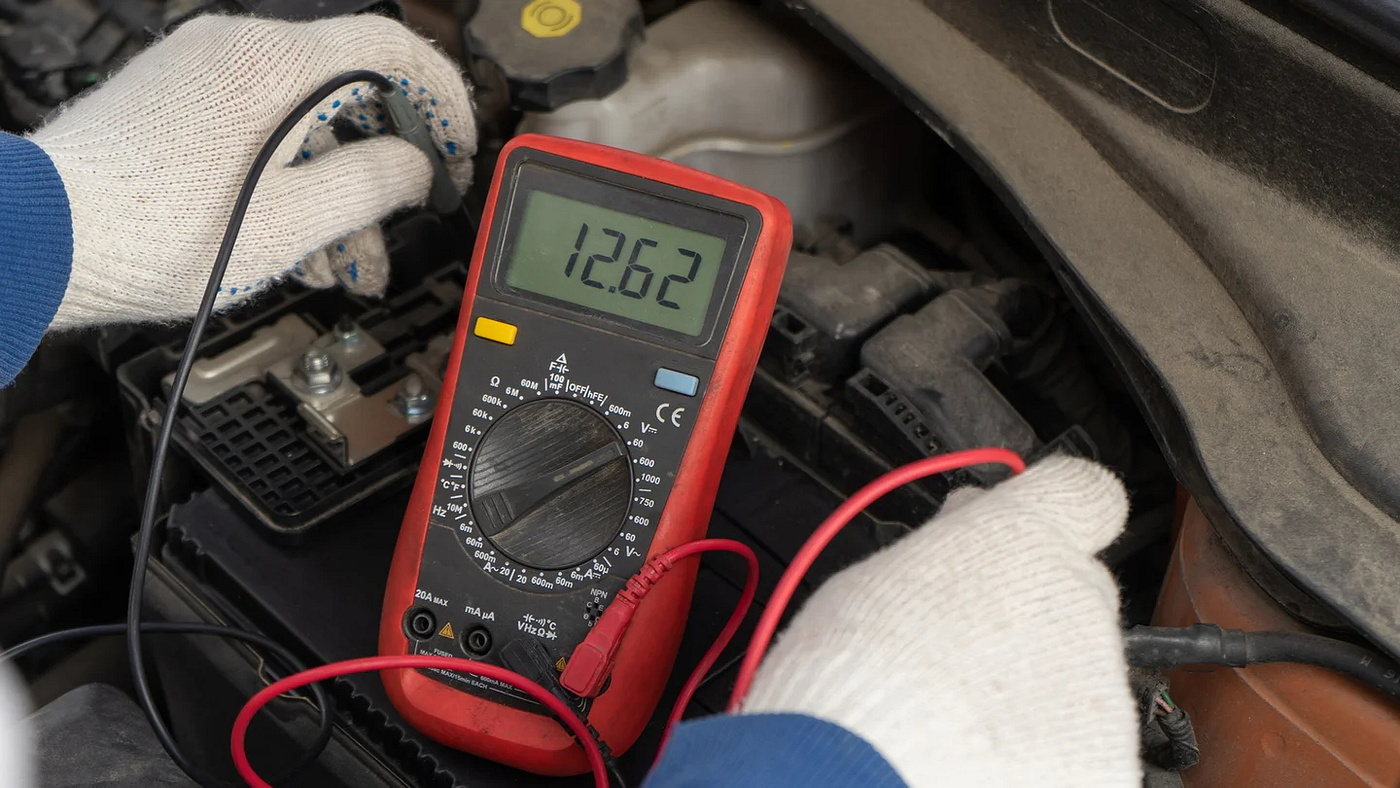How Many Volts Is a Car Battery: Battery Type and Battery Voltage Test

Anyone who owns or drives a car should have a basic understanding of car battery voltage, as it plays a crucial role in the vehicle's overall performance. The voltage of your car's battery directly impacts the functioning of various engine components, including the lights and other electrical systems. If you've ever wondered, "How many volts is a car battery?" or found yourself troubleshooting electrical issues, understanding battery voltage is key.
In this article, we'll explain what car battery voltage is, explore the different types of car batteries, and provide guidance on how to test the voltage to ensure your vehicle stays in optimal condition.
What is Car Battery Voltage?
Car battery voltage refers to the electrical potential difference across the terminals of a car battery, typically measured in volts (V). This voltage is an indicator of the battery's charge level and overall health.
A standard car battery is a 12-volt lead-acid battery, but its voltage can vary depending on its state of charge:

Fully Charged (Open Circuit/Resting): When a car battery is fully charged and not under any load, its voltage should be around 12.6 to 12.8 volts.
Under Load (Engine Running): When the car's engine is running, the alternator charges the battery, raising the voltage to between 13.5 to 14.7 volts.
Partially Discharged: A battery showing around 12.1 volts is approximately 50% charged, while a reading of about 11.7 volts indicates it's around 25% charged.
Fully Discharged: A reading of 10.5 volts or lower usually indicates a dead or fully discharged battery.
Cranking Voltage: When starting the car, the voltage can drop momentarily to around 10 volts due to the high current demand from the starter motor.
Understanding Voltage in Car Batteries
In car batteries, voltage refers to the electrical pressure that drives the flow of current throughout the vehicle's electrical system. The standard voltage for most car batteries is 12 volts. This standardized voltage strikes a balance between efficiency, safety, and performance.
Why 12 Volts?
Historical Context: The 12-volt system became the automotive industry standard because it provided an ideal combination of power and safety. Early vehicles used 6-volt systems, but as vehicles began to incorporate more electrical components and higher power demands, the 12-volt system proved more efficient. It delivered sufficient power without significantly increasing the battery size or weight.
Power Delivery: A 12-volt system provides just the right amount of electrical power to start the engine and operate various components, such as headlights, radios, and infotainment systems. This voltage ensures that the electrical systems in most cars function effectively without overloading the system.
Component Compatibility: Many automotive components, like starters, ignition systems, and electronic control units (ECUs), are designed to work at 12 volts. Standardizing on this voltage simplifies manufacturing and maintenance across different car models, making it easier to replace or repair parts.
Safety Considerations: A 12-volt system is considered safer to handle compared to higher voltage systems. It reduces the risk of electrical shock and makes maintenance tasks more manageable for both professionals and car owners.
Types of Car Batteries
While 12 volts is the standard voltage, different types of car batteries are designed to meet various needs and suit different vehicle types. Here’s an overview of the most common types:
Conventional Lead-Acid Batteries
Construction: These batteries consist of lead plates submerged in a sulfuric acid electrolyte. The chemical reaction between the lead and acid produces electrical energy.
Performance: Known for their reliability and cost-effectiveness, conventional lead-acid batteries are commonly used in gasoline-powered vehicles.
Maintenance: They may require periodic topping off of electrolyte levels and occasional cleaning of terminals to prevent corrosion.
Absorbent Glass Mat (AGM) Batteries
Construction: AGM batteries use a fiberglass mat soaked with electrolyte, which is absorbed and held in place by the mat. This design makes them spill-proof and highly resistant to vibration.
Performance: AGM batteries deliver excellent performance, especially in extreme temperatures and high-demand situations. They're often used in vehicles with advanced electrical systems or start-stop technology.
Maintenance: AGM batteries are typically maintenance-free, requiring no electrolyte level checks.
Gel Cell Batteries
Construction: Similar to AGM batteries, gel cell batteries use a silica-based gel to immobilize the electrolyte, enhancing safety and durability.
Performance: Gel cell batteries offer reliable performance and are resistant to deep discharges. They are ideal for applications where stability and dependability are critical, such as RVs or marine environments.
Maintenance: Gel cell batteries require minimal maintenance, much like AGM batteries.
Lithium-Ion Batteries
Construction: Lithium-ion batteries use lithium compounds as electrodes and a liquid or polymer electrolyte. They offer a higher energy density compared to traditional lead-acid batteries.
Performance: Common in hybrid and electric vehicles, lithium-ion batteries provide high power output, a lightweight design, and a longer lifespan. They also offer fast charging capabilities and superior overall performance.
Maintenance: Lithium-ion batteries generally require minimal maintenance but are more sensitive to temperature extremes and need specialized charging equipment.
How to Check Your Car Battery’s Voltage
Maintaining the proper voltage is essential for your car battery’s health and your vehicle’s performance. Here’s a step-by-step guide to checking your car battery’s voltage:

Using a Multimeter
Gather Your Tools: You’ll need a digital multimeter to measure voltage. Ensure the car is off to get an accurate reading.
Prepare the Multimeter: Set the multimeter to measure DC voltage, typically labeled as “V” with a straight line.
Check the Voltage: Attach the red probe to the positive terminal (+) and the black probe to the negative terminal (−). The multimeter will display the voltage reading. A fully charged battery should read around 12.6 volts.
Using a Battery Tester
Connect the Tester: Battery testers are designed specifically for automotive batteries. Connect the tester clamps to the corresponding battery terminals.
Interpret the Results: Most battery testers will have a scale that helps you determine the health of your battery, indicating whether it’s in good, fair, or poor condition based on the voltage and internal resistance.
Check Voltage with the Engine Running
Measure Alternator Output: Start the engine and use the multimeter to check the voltage across the battery terminals again. With the engine running, the voltage should typically be between 13.7 and 14.7 volts. This indicates that the alternator is properly charging the battery.
Frequently Asked Questions (FAQs)
How often should I check my car battery voltage?
It’s a good idea to check your car battery’s voltage every 3-4 months or before going on a long trip to ensure the battery is in good condition.
Can a car battery have too high a voltage?
Yes, if the voltage exceeds 15 volts, the battery is overcharged, which can cause damage and reduce its lifespan.
What is considered a low voltage for a car battery?
A voltage reading below 11.8 volts is considered too low, and it typically indicates that the battery is either dead or faulty.
Source of the article: Energy-X News
- Art
- Causes
- Crafts
- Dance
- Drinks
- Film
- Fitness
- Food
- Spiele
- Gardening
- Health
- Startseite
- Literature
- Music
- Networking
- Andere
- Party
- Religion
- Shopping
- Sports
- Theater
- Wellness


